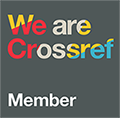A Meta-Analysis Study on the Role of the Scaffolding Method in Teaching Mathematics
DOI:
https://doi.org/10.33308/26674874.2025393920Keywords:
Scaffolding, Mathematics Teaching, Learning SupportAbstract
The aim of this meta-analysis study is to examine the effect of the scaffolding method, which is designed as a supportive approach to promote self-directed learning, on mathematics instruction. Thirteen studies that met the inclusion and exclusion criteria for the meta-analysis were included in the research. The coded data were analyzed using the CMA 4.0 software. This study was analyzed using Hedge’s g effect size, and the results indicated that the data were heterogeneous. To identify the source of heterogeneity, an analog ANOVA analysis was performed based on sub-discipline and grade level variables. The source of heterogeneity was found to be school level and sub-discipline. Additionally, according to meta-regression analyses in the study, it was concluded that age and the use of technological applications as moderator variables did not affect the effect size on mathematics instruction. The results of the study revealed that the scaffolding method is an effective and integrative approach that can be used in mathematics instruction. Further research is needed to better identify the conditions under which scaffolding is most effective in mathematics education.
Downloads
References
Anghileri, J. (2006). Scaffolding practices that enhance mathematics learning. Journal of Mathematics Teacher Education, 9(1), 33–52. DOI: https://doi.org/10.1007/s10857-006-9005-9
Ardana, I. M., Ariawan, I. P. W., & Divayana, D. G. H. (2017). Measuring the effectiveness of BLCS Model (Bruner, Local Culture, Scaffolding) in mathematics teaching by using expert system-based cse-ucla. International Journal of Education and Management Engineering, 7(4), 1–12. DOI: https://doi.org/10.5815/ijeme.2017.04.01
Atalay-Öcal, B. (2018). Scaffolding stratejilerinin müzik öğretmeni adaylarının çalgı öğretme ve yansıtıcı düşünme becerilerine etkisi [Yayımlanmamış doktora tezi]. Marmara Üniversitesi.
Bature, I. J., & Jibrin, A. G. (2015). The perception of preservice mathematics teachers on the role of scaffolding in achieving quality mathematics classroom instruction. International Journal of Education in Mathematics, Science and Technology, 3(4), 275–283. DOI: https://doi.org/10.18404/ijemst.76395
Ben-David Kolikant, Y., &, Broza, O. (2011). The effect of using a video clip presenting a contextual story on low-achieving students’ mathematical discourse. Educational Studies in Mathematics, 76(1), 23-47. DOI: https://doi.org/10.1007/s10649-010-9262-5
Borenstein, M., Hedges, L. V., Higgins, J. P. T., & Rothstein, H. R. (2009). Introduction to meta-analysis. Wiley. DOI: https://doi.org/10.1002/9780470743386
Brower, R. S., Woods, C. S., Jones, T. B., Park, T. J., Hu, S., Tandberg, D. A., ... & Martindale, S. (2017). Scaffolding mathematics remediation for academically at-risk students following developmental education reform in Florida. Community College Journal of Research and Practice, 42(2), 112–128. DOI: https://doi.org/10.1080/10668926.2017.1279089
Çakmak Gürel, Z. (2023). Adaptive and affective support of mathematics teachers from the perspective of secondary school students. Necatibey Eğitim Fakültesi Elektronik Fen ve Matematik Eğitimi Dergisi, 17, 695–719. https://doi.org/10.17522/balikesirnef.1357528 DOI: https://doi.org/10.17522/balikesirnef.1357528
Campbell Collaboration. (2022). Effect size calculator. https://www.campbellcollaboration.org/research-resources/effect-size-calculator.html
Chase, K., & Abrahamson, D. (2015). Reverse-scaffolding algebra: Empirical evaluation of design architecture. ZDM – Mathematics Education, 47(7), 1195–1209. DOI: https://doi.org/10.1007/s11858-015-0710-7
Çilingir, S. K. (2018). Sınıf öğretmenlerinin matematik derslerinde yapı iskelesine yatkın olma düzeylerinin incelenmesi [Yayımlanmamış yüksek lisans tezi]. Kırıkkale Üniversitesi.
Cobb, P., Yackel, E., & McClain, K. (Eds.). (2000). Communicating and symbolizing in mathematics: Perspectives on discourse, tools and instructional design. Lawrence Erlbaum Associates.
Cohen, J. (1988). Statistical power analysis for the behavioral sciences (2nd ed.). Lawrence Erlbaum Associates.
Dagoc, D. A., & Tan, D. A. (2018). Effects of metacognitive scaffolding on the mathematics performance of grade 6 pupils in a cooperative learning environment. International Journal of English and Education, 7(4), 378–389.
Dove, A., & Hollenbrands, K. (2013). Teachers’ scaffolding of students’ learning of geometry while using a dynamic geometry program. International Journal of Mathematical Education in Science and Technology, 45(5), 668–681. DOI: https://doi.org/10.1080/0020739X.2013.868540
Eick, C. J. (2002). Use of the learning cycle with inters: A case study. School Science and Mathematics, 102(1), 32–42.
Erdoğan, A., & Erdoğan, E. Ö. (2018). Scaffolding students in non-routine problem solving environment: The case of two mathematics teachers. Journal of Human Sciences, 14(4), 4850–4864. DOI: https://doi.org/10.14687/jhs.v14i4.5016
Glass, G. (1982). Meta-analysis: An approach to the synthesis of research results. Journal of Research in Science Teaching, 19(2), 93-112. DOI: https://doi.org/10.1002/tea.3660190202
González, G., & DeJarnette, A. F. (2015). Teachers’ and students’ negotiation moves when teachers scaffold group work. Cognition and Instruction, 33(1), 1-45. DOI: https://doi.org/10.1080/07370008.2014.987058
Hogan, K., & Pressley, M. (1997). Scaffolding scientific competencies within classroom communities of inquiry. In K. Hogan & M. Pressley (Eds.), Scaffolding student learning: Instructional approaches and issues (pp. 74–98). Brookline Books.
Hogan, K., Nastasi, B. K., & Pressley, M. (1999). Discourse patterns and collaborative scientific reasoning in peer and teacher-guided discussions. Cognition and Instruction, 17(4), 379–432. DOI: https://doi.org/10.1207/S1532690XCI1704_2
Huang, Q., Sun, J., Lau, E. Y. H., & Zhou, Y. (2022). Linking Chinese mothers’ and fathers’ scaffolding with children's initiative and mathematics performance: A moderated mediation model. Early Childhood Research Quarterly, 59, 74–83. DOI: https://doi.org/10.1016/j.ecresq.2021.11.001
Ihechukwu, N. (2020). Impact of instructional scaffolding approach on secondary school students' achievement in mathematics. Malikussaleh Journal of Mathematics Learning (MJML), 3(2), 46–50. DOI: https://doi.org/10.29103/mjml.v3i2.3168
İlyas, B. M., Rawat, K. J., Bhatti, M. T., & Malik, N. (2013). Effect of teaching of algebra through social constructivist approach on 7th graders’ learning outcomes in Sindh Pakistan. International Journal of Instruction, 6(1), 151–164.
Karabay, F. H. (2020). Matematiksel problem çözmede mobil uygulamalarla yapı iskelesi ve ipucu kullanımının ilkokul üçüncü sınıf öğrencilerinin akademik başarılarına ve bilişsel yüklerine etkisi [Yayımlanmamış yüksek lisans tezi]. Yozgat Bozok Üniversitesi.
Kereluik, K. M. (2013). Scaffolding self-regulated learning online: A study in high school mathematics classrooms [Yayımlanmamış doktora tezi]. Michigan State University.
Lipsey, M. W., & Wilson, D. B. (2001). Practical meta-analysis. Sage Publications.
Marshman, M. (2017). Identifying the mathematics middle year students use as they address a community issue. Mathematics Education Research Journal, 30(4), 355-382. DOI: https://doi.org/10.1007/s13394-017-0195-5
Mevarech, Z. R., & Iddini, V. (2021). Developing young children's mathematics knowledge and reasoning through mathematics e-book activities supported by metacognitive scaffolding. Journal of Cognitive Education and Psychology, 20(2), 179-189. DOI: https://doi.org/10.1891/JCEP-2021-0016
Molleman, L., van den Berg, P., & Weissing, F. J. (2014). Consistent individual differences in human social learning strategies. Nature Communications, 5, 3570. DOI: https://doi.org/10.1038/ncomms4570
Nason, R., Chalmers, C., & Yeh, A. (2012). Facilitating growth in prospective teachers’ knowledge: Teaching geometry in primary schools. Journal of Mathematics Teacher Education, 15(3), 227–249. DOI: https://doi.org/10.1007/s10857-012-9209-0
Pea, R. D. (2004). The social and technological dimensions of scaffolding and related theoretical concepts for learning, education, and human activity. The Journal of the Learning Sciences, 13(3), 423–451. DOI: https://doi.org/10.1207/s15327809jls1303_6
Pol, J., Volman, M., & Beishuizen, J. (2010). Scaffolding in teacher–student interaction: A decade of research. Educational Psychology Review, 22(3), 271–296.
Roschelle, J., Rafanan, K., Bhanot, R., Estrella, G., Penuel, W. R., Nussbaum, M., & Claro, S. (2010). Scaffolding group explanation and feedback with handheld technology: Impact on students’ mathematics learning. Educational Technology Research and Development, 58(4), 399–419. DOI: https://doi.org/10.1007/s11423-009-9142-9
Schmid, H. C., Stijnen, T., & White, I. R. (2021). Handbook of meta-analysis. Taylor & Francis Group. DOI: https://doi.org/10.1201/9781315119403
Şen, S., & Yıldırım, İ. (2021). CMA ile meta-analiz uygulamaları. Anı Yayıncılık.
Sutiarso, S., Coesamin, C., & Nurhanurawati, N. (2018). The effect of various media scaffolding on increasing understanding of students’ geometry concepts. Journal on Mathematics Education, 9(1), 95–102. DOI: https://doi.org/10.22342/jme.9.1.4291.95-102
Sweller, J. (1988). Cognitive load during problem solving: Effects on learning. Cognitive Science, 12(2), 257–285. DOI: https://doi.org/10.1016/0364-0213(88)90023-7
Tharpe, R., & Gallimore, R. (1988). Rousing minds to life: Teaching, learning and schooling in social context. Cambridge University Press. DOI: https://doi.org/10.1017/CBO9781139173698
Üstünel, M. F. (2016). Ödevin akademik başarıya etkisi: Bir meta-analiz çalışması [Yayımlanmamış yüksek lisans tezi]. Akdeniz Üniversitesi.
Van de Pol, J., Volman, M., & Beishuizen, J. (2010). Scaffolding in teacher–student interaction: A decade of research. Educational Psychology Review, 22, 271–296. DOI: https://doi.org/10.1007/s10648-010-9127-6
Vogel, F., Kollar, I., Ufer, S., Strohmaier, A., Reiss, K., & Fischer, F. (2021). Scaffolding argumentation in mathematics with CSCL scripts: Which is the optimal scripting level for university freshmen? Innovations in Education and Teaching International, 58(5), 512–521. DOI: https://doi.org/10.1080/14703297.2021.1961098
Wood, D., Bruner, J. S., & Ross, G. (1976). The role of tutoring in problem solving. Journal of Child Psychology and Psychiatry, 17, 89–100. DOI: https://doi.org/10.1111/j.1469-7610.1976.tb00381.x
Downloads
Published
How to Cite
Issue
Section
License
Copyright (c) 2025 Ayşegül Fildişi- Esra Yıldız

This work is licensed under a Creative Commons Attribution-NonCommercial-NoDerivatives 4.0 International License.
I accept that the Owner of Journal of Education for Life, the Editor, Associate Editors, Reviewers and the Editorial Board cannot be hold responsible regarding the scope, the findings, the discussion and conclusion of the manuscript submitted.
I declare to the editorship of Journal of Education for Life that the manuscript is original and has not been published anywhere else or is not under evaluation process for any other journal.
I approve that I grant Journal of Education for Life as the sole and exclusive right and license to publish for the full legal term of copyright of my manuscript concurring with article 5846 / 22-23-25 while I retain copyright in the work.





